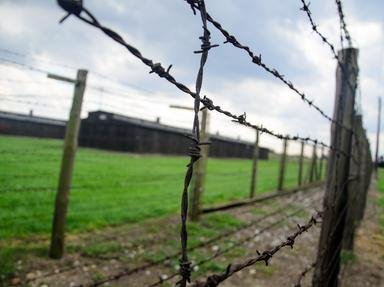Quiz Answer Key and Fun Facts
1. To which camp, liberated on February 13, 1945, were the men who worked for Oskar Schindler sent before arriving at Bruennlitz?
2. Only two survivors are known to have escaped this camp, liquidated by the Nazis in 1943.
3. Liberated by American forces of the 97th Infantry Division, which camp was initially set up for "asocials and criminal elements"?
4. From December 13, 1938 until May 4, 1945, this camp near Hamburg saw 106,000 people pass through its gates.
5. In which camp did members of the 322nd Rifle Division of the Red Army find the only survivor of the Secret Annex on January 27, 1945?
6. Becoming operational on July 24, 1942, which camp ceased to function in October of 1943?
7. Which camp was the very first one built on Polish soil, and the very last to be liberated?
8. After allowing 7,500 inmates to be transported to neutral Sweden by the Red Cross, this camp was liberated by the Red Army on April 30, 1945.
9. Which of the following groups were originally NOT singled out by the Nazis for persecution and extermination?
10. Which country lost the most of its Jews with regards to its total Jewish population before the war?
Source: Author
RangerOne
This quiz was reviewed by FunTrivia editor
bloomsby before going online.
Any errors found in FunTrivia content are routinely corrected through our feedback system.
